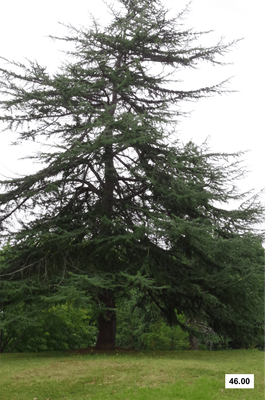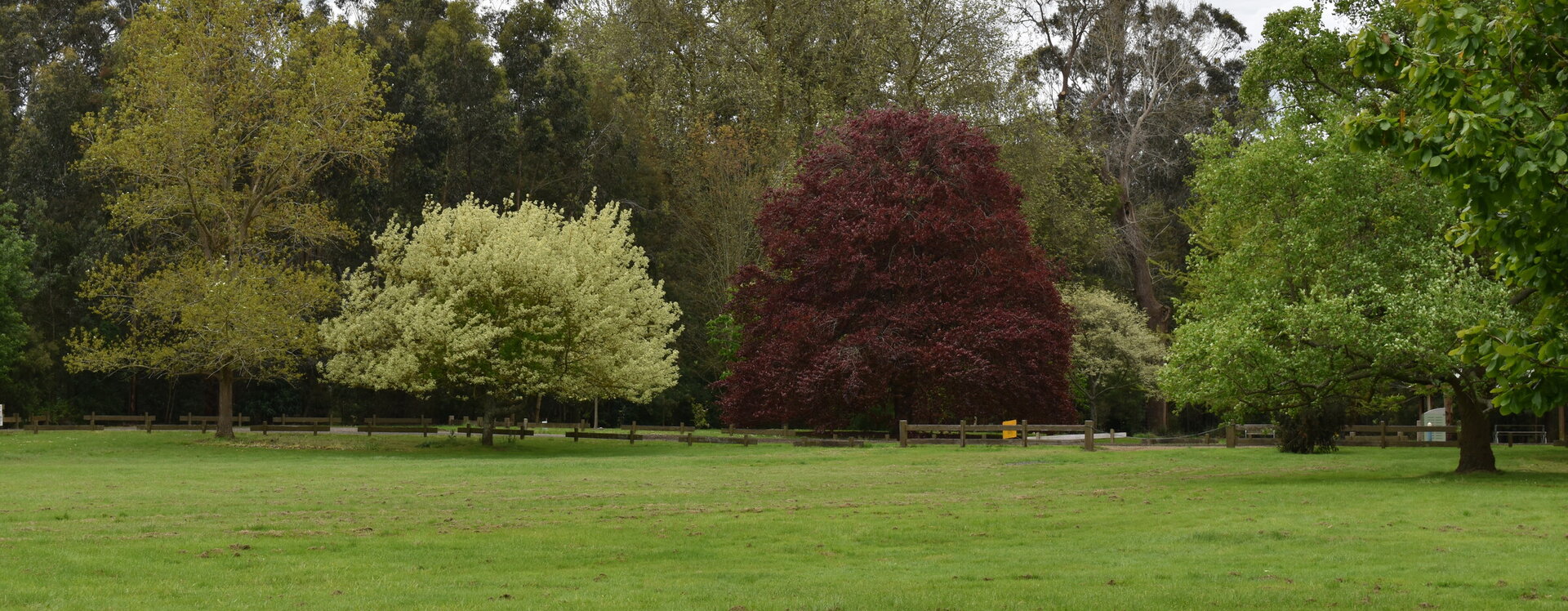




Cedrus deodara
Cedrus
Cedrus deodara, the Deodar cedar or Himalayan cedar is a species of cedar native to the western Himalayas in eastern Afghanistan, northern Pakistan, India, southwestern Tibet, and western Nepal occurring at 1,500–3,200 m altitude. It is a large evergreen coniferous tree reaching 40–50 m with a trunk up to 3 m in diameter. It has a conic crown with level branches and drooping branchlets. The leaves are needle-like, around 2.5–5 cm long, slender and borne singly on long shoots, and in dense clusters of 20–30 on short shoots; they vary from bright green to glaucous blue-green in colour. The female cones are barrel-shaped, 7–13 cm long and 5–9 cm broad, and disintegrate when mature (in 12 months) to release the winged seeds. The male cones are 4–6 cm long, and shed their pollen in autumn. The name 'Deodar' derives from the Sanskrit term devadāru, which means "wood of the gods", a compound of deva 'god' and dāru 'wood and tree'.
46.00 Location A4 Planted in 1968 Latitude; -38.401404640000 Longitude; 146.051915850000
46.01 Location B4 Latitude; -38.401460000000 Longitude; 146.052030000000 grown from seed collected in the Melbourne Botanic Garden.

